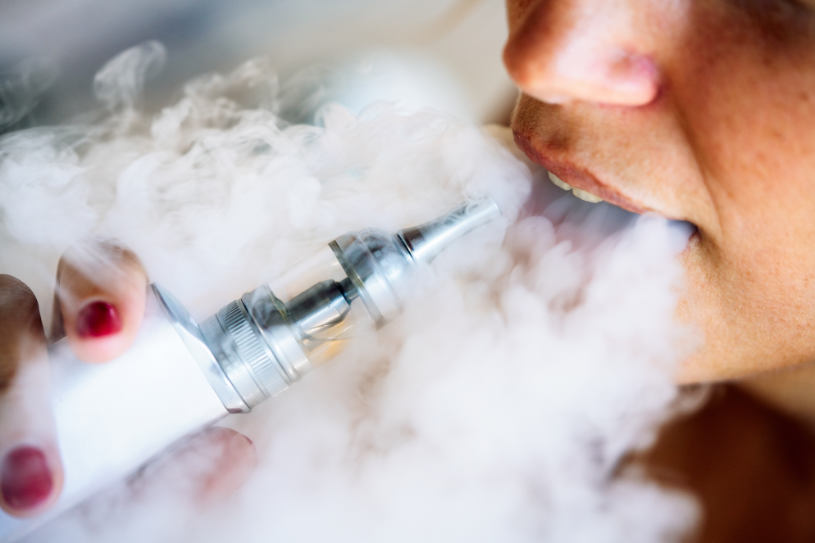Use of some medications may result in different side effects of drugs. Dyspnea, which is one of them, is very common affecting about 25% of patients in an ambulatory setting. Medically referred to as dyspnea, shortness of breath is the body’s inability to allow full flow of air into the lungs. This can be very painful and distressing. Some causes of Dyspnea include asthma, anxiety disorders, collapsed lungs, heart attacks, and exposure to drugs. Though it is rare, several drugs can contribute to dyspnea if they are abused.
Table Of Contents:
This article will discuss drugs that cause shortness of breath and their effects on the respiratory system. Signs that indicate respiratory issues and how to treat respiratory problems that are drug-related will also be covered.
Effects Of Drug Abuse On Respiratory System
Abusing drugs always has negative health implications and the respiratory system is not left out. The method in which the drug is ingested and the direct impact of the drug can affect the respiratory system. For example studies indicate that vaping marijuana can lead to serious health implications including death. Opioids are also among drugs that can cause shortness of breath, and some other serious health problems, as for example drug induced liver disease.
Here Is a List of Effects Drug Abuse Can Have On the Respiratory System:
- Bronchitis
- Dyspnea
- Lung cancer
- Emphysema
- Mycobacterium tuberculosis
- Acute and chronic sinusitis
- Barotrauma
- Pneumo-mediastinum
- Haemoptysis
- Interstitial infiltration
Unfortunately, the misuse of drugs including prescription medications is on the rise. Thus, it is essential to intensify education on the effects of drug abuse. Drug addicts or abusers can seek treatment at rehab centers to curb their addiction. So what drugs do to your brain and how do they cause addiction?
Prevalence of Respiratory Diseases And Drug Misuse
There is a high prevalence of drug abuse which leads to respiratory diseases. Records indicate that cocaine users between 15% – 55% have complained of pulmonary diseases. Some of the reported cases include atelectasis, pneumothorax, airspace disease, and pneumomediastinum. This spike can also be attributed to the increase in the usage of crack. However, illicit drugs are not the only cause of respiratory diseases. Studies also show that Methadone, an opioid agonist, is among drugs that can cause shortness of breath. It is also a fact that illegal drugs cause kidney failure.
Signs Of Respiratory Issues
Respiratory problems come with signs which should be taken seriously. Symptoms range from common to severe, thus drug users should be mindful of any changes after drug intake. Some of these symptoms may disappear immediately when the drug is stopped. Others may linger on and might need medical attention.
Here Are Some Warning Signs of Respiratory Issues:
- Difficulty breathing
- Stubborn cough
- Noisy breathing
- Coughing up blood
- Persistent chest pains
- Chronic mucus
- Sore throat
- Body aches
- Fatigue
It is essential to identify these symptoms of respiratory diseases to be cured. Early treatment of respiratory problems is key to saving lives. Though difficulty in breathing is a common experience, especially after working out, it should be reported once it persists.

Medications that Cause Shortness of Breath And Other Respiratory Diseases
Drug-induced dyspnea is associated with severe difficulty in breathing, tightness of the chest, and painful inhalation. As already stated medications can also cause other respiratory diseases. The commonality of respiratory diseases led a team of scientists to investigate the drugs that cause shortness of breath and other respiratory diseases. They compiled a list of medications that cause shortness of breath. However, they noted that the medications that caused shortness of breath and related diseases continued to increase. Thus, their list is by no means an exhaustive one.
List Of Drugs That Cause Shortness Of Breath
Difficulty in breathing occurs when you gasp for air. This can happen after a physically demanding activity or after taking a drug. Symptoms include wheezing, labored breathing when lying flat, crackling in lungs, night sweats, and high fever. Several drugs may cause dyspnea. Some of these drugs can be procured over-the-counter. Here is a list of medications that can cause shortness of breath.
Opioids
Opioids are drugs that can be used to treat persistent and severe pain. They work by acting on the opioid receptors that are located on neuronal cell membranes. This action produces analgesic effects which help the patients to experience some relief. These medications can cause a condition called respiratory depression – slow and ineffective breathing.
Some of the Opioid Drugs That Cause Shortness of Breath Include:
Opioids can cause dependence which can lead to abuse. Therefore, patients should take them according to prescription. This is because abuse of opioids can be fatal. Opioid addicts should seek help from rehab centers to wean off these medications.
Inhalants
Inhalants are household and industrial chemicals that are inhaled to induce intoxication. These chemicals were not intended for intoxication but some people have found a way of getting euphoria on them. It has been observed that inhalants are mostly used by younger teens than older ones. Overdosing on inhalants can trigger respiratory disorders. The inhalants work on the brain by suppressing the central nervous system and reducing brain activity.
Some Dangerous Inhalants People May Abuse Include:
- Glue
- Toluene
- Gasoline
- Lighter fluid
- Nitrous oxide
- Amyl nitrate
- Correction fluid
- Cleaning fluid
Several other chemicals can be used to produce a feeling of intoxication. The feeling only lasts a few minutes. Therefore, users are forced to inhale these chemicals many times to sustain their intoxication. Inhaling dangerous chemicals can cause serious side effects including hallucinations, headaches, nausea, as well as damage to the lungs.
NSAIDS
Non-steroidal anti-inflammatory drugs (NSAIDs) are medications used in the treatment of pain and fever. Unlike the inhalants, they don’t elicit an euphoric feeling but are among the most abused drugs. NSAIDs work by blocking the cyclooxygenase enzyme. This enzyme is responsible for producing prostaglandins which control inflammation. Studies show that NSAIDs are part of drugs that can cause shortness of breath.
Here Are Some Examples of NSAIDs:
These classes of drugs are among the most abused. This is because they can be easily attained over the counter. Some NSAIDs can cause difficulty breathing within 20 minutes to 3 hours of ingestion. Abusing these drugs can be fatal, therefore, patients are advised to take these drugs only when prescribed.
Medications That Cause Pleurisy
Pleurisy is a medical condition where the tissue that distinguishes the chest wall from the lungs becomes inflamed. This condition can be caused by certain drugs that are ingested into the body. Pleurisy causes a sharp stab in the chest area and can lead to other respiratory disorders.
Vasodilators are a class of medications mostly associated with pleurisy. They open up blood vessels for the blood to flow through and work by preventing tightening and narrowing veins and arteries. Vasodilators are effective in treating blood pressure. However, they have a connection with various pulmonary diseases including pleurisy.
Examples of Medications That Cause Pleurisy Are:
- Lisinopril
- Losartan
- Captopril
- Enalapril
- Fosinopril
- Benazepril
- Quinapril
- Moexipril
- Perindopril
Other drugs such as Hydralazine and Quinidine can also cause pleurisy. Some cases of pleurisy involve coughs and fever as well. The chest pain associated with pleurisy can be mitigated by taking shallow breaths.
Can drugs cause cardiac arrest? Report to the nearest hospital if any of these symptoms are detected for medical attention.
Acute bronchitis, pulmonary fibrosis, pleurisy, and asthma are a few of the many effects that misuse of medicines can have on one’s health. The lungs are more affected by the abuse of drugs than any organ.
Drugs Causing Pulmonary Fibrosis
Pulmonary fibrosis is a disease that affects the lungs. It is a result of the scarring of the lungs. When the lungs are damaged it becomes difficult for oxygen to reach the bloodstream. There are several types of pulmonary fibrosis which include idiopathic pulmonary fibrosis, non-specific interstitial pneumonitis, and cryptogenic organizing pneumonia. Pulmonary fibrosis can be caused by pollutants and drugs. Some classes drugs causing pulmonary fibrosis include:
Antibiotics
These are medicines that fight against bacteria by slowing down their growth. Many powerful antibiotics are used to prevent infections. The mechanisms of action of antibiotics differ depending on the type. Most antibiotics fight against bacteria by inhibiting bacterial cell wall synthesis. Antibiotics, especially nitrofurantoin, are known to be one of the drugs causing pulmonary fibrosis.
Examples of Nitrofurantoin Include:
- Macrodantin
- Furadantin
- Macrobid
There are several classes of antibiotics. Many of them are not linked to pulmonary fibrosis. However, nitrofurantoin is strongly linked with pulmonary fibrosis. Thus, this drug should be taken with extra caution to avoid adverse reactions.
Immunosuppressants
Another set of drugs causing pulmonary fibrosis is immunosuppressant drugs. These are drugs that lower the body’s immune system. This is done to prevent the body from rejecting transplanted organs. However, some of them, especially methotrexate, can cause pulmonary fibrosis.
Other drug classes related to pulmonary fibrosis include cancer chemotherapy drugs and medicines for heart conditions. These drugs are not OTC, thus, laying hands on them is quite difficult. Medical practitioners must exercise caution in the administration of these drugs to forestall any future health risks.

Treating Drug-Induced Respiratory Issues
Many medicines and chemicals can cause respiratory diseases when abused. Some of these medications include NSAIDS, inhalants, antibiotics, and immunosuppressants. Symptoms of respiratory diseases include shortness of breath, wheezing, fever, headaches, and fever. It is essential to stop taking the medicines once the signs of respiratory diseases have surfaced.
Here Are a Few Treatment Options Available to Patients With Drug-Induced Pulmonary Diseases:
- Inpatient Treatment– The patient is admitted to the facility and is given round-the-clock palliative care. Doctors may introduce alternative medicines to aid withdrawal. Intravenous fluids may also be administered to help treat signs of respiratory diseases. In some cases, surgery may be required. Inpatient treatment is effective for sufferers of chronic respiratory issues.
- Outpatient Treatment– The patient is not admitted but schedules regular visits to the rehab center for outpatient treatment. This is effective for sufferers of minor drug-induced respiratory problems. Patients, however, have to develop the discipline to honor the rehab center schedules if they want to see improvements. Depending on the disease, medical doctors may prescribe alternative medications to aid withdrawal.
- Support Groups– Patients who find it difficult to wean off drugs may use these groups. Support groups can either be made up of family and friends or people who have similar drug addiction issues. People in these groups share their experiences on their way to freedom from addiction. These stories can be helpful and help others who are going through difficult moments due to drug abuse and addiction. Milieu support groups can be used in addition to the other treatment options mentioned above.
Research shows that respiratory diseases are among the leading causes of death in the world. One of the major causes of respiratory diseases is drug abuse and addiction. Drug-induced respiratory issues can be fatal. It is essential to seek help from rehab centers and medical facilities. Early diagnosis can save a patient’s life. Patients should also stick to the schedule of prescribed drugs to avoid contracting respiratory issues and other reactions, as for instance some drugs can increase libido
Hope Without Commitment
Find the best treatment options. Call our free and confidential helpline
Most private insurances accepted
Related Topics
- Drugs Effects Of Abuse
- Drugs Effects On Heart
- Drugs Effects On Liver
- Drugs Effects On Kidneys
- Drugs Effects On Brain
- Drugs Effects On Hypersexuality
Page Sources
- D. Berliner, N. Schneider, T. Welte, J. Bauersachs. (2016). The Differential Diagnosis of Dyspnea. Deutsches Ärzteblatt. https://www.ncbi.nlm.nih.gov/pmc/articles/PMC5247680/
- National Institute on Drug Abuse. (n.d). Respiratory Effects. National Institute on Drug Abuse. https://www.drugabuse.gov/drug-topics/health-consequences-drug-misuse/respiratory-effects
- A. Bramson. (2021). Substance Use During the Pandemic. American Psychological Association. https://www.apa.org/monitor/2021/03/substance-use-pandemic
- K. McCarroll, M. Roszler. (1991). Lung Disorders Due to Drug Abuse. J. Thorac Imaging. https://pubmed.ncbi.nlm.nih.gov/1990155/
- F. Palmer, M. Jaffray, M. Moffat, C. Matheson, D. McLernon. Et al. (2012). Prevalence of Common Chronic Respiratory Diseases in Drug Misusers: A Cohort Study. Nature. https://www.nature.com/articles/pcrj201269
- American Lung Association. (n.d). Warning Signs of Lung Disease. American Lung Association. https://www.lung.org/lung-health-diseases/warning-signs-of-lung-disease
- M. Boom, M. Niesters, E. Sarton, L. Aarts, T. Smith, et al. (2012). Non-analgesic Effects of Opioids: Opioid-induced Respiratory Depression. Curr Pharm Des. https://pubmed.ncbi.nlm.nih.gov/22747535/
- National Institute on Drug Abuse. (n.d). Inhalants DrugFacts. National Institute on Drug Abuse. https://www.drugabuse.gov/publications/drugfacts/inhalants
- J. Sturtevant. (1999). NSAID-induced Bronchospasm - A Common and Serious Problem. A Report from MEDSAFE the New Zealand Medicines and Medical Devices Safety Authority. N Z Dent J. https://pubmed.ncbi.nlm.nih.gov/10561993/
- B. Jakubovic, A. Donovan, P. Webster, N. Shear. (2013). Methotrexate-induced Pulmonary Toxicity. Canadian Respiratory Journal. https://www.ncbi.nlm.nih.gov/pmc/articles/PMC3814259/
- M. Tatley. (2002). Pulmonary Reactions with Nitrofurantoin. MEDSAFE. https://medsafe.govt.nz/profs/puarticles/nitrofurant.htm

 Authored by
Authored by  Reviewed by
Reviewed by 
